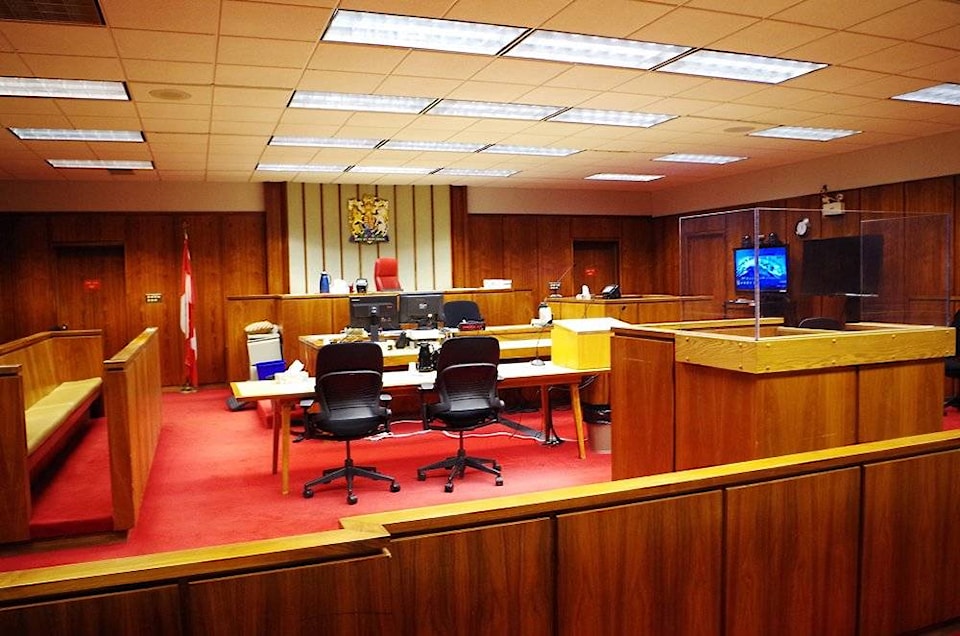Albert Giesbrecht will not be eligible for parole for 12 years.
B.C. Supreme Court Justice David Crossin found Giesbrecht guilty of the May 18, 2017 second-degree murder of Raymond Bishop on May 24 of this year. He delivered his decision on parole eligibility at the courthouse in Smithers Dec. 9.
“Considering the principle set out in section 745.4, 718 and 718.1 and [718.2] I sentence Mr. Giesbrecht to a term of inprisonment for life without eligibility for parole until he has served a period for 12 years,” the judge said.
In his decision Crossin said he did not believe Giesbrecht’s claim that his firearm discharged accidentally into the Bishop’s on May 18, 2017.
“In my respectful view the suggestion challenges the imagination, much less rationally emerges from the evidence… I find that the discharge of the rifle was at point-blank range less than eight inches from Mr. Bishop’s chest.
“I reject these statements as after-the-fact, self-serving attempts to create a false path in retreat from the inculpatory substance of [Giesbrecht’s] first 911 call.”
When Crossin instructed Giesbrecht to stand to hear the ruling, Giesbrecht refused.
Giesbrecht is also subject to an order to provide a DNA sample and prohibited from possessing firearms for life.
He also forfeits the weapons which were entered as exhibits in the trial and the ammunition seized by police.
During the six-week trial, which took place over three sessions between January and March, the Crown painted a picture of an abusive man consumed by bitterness and jealousy over his divorce from his ex-wife Susan Giesbrecht.
On the morning of May 18, 2017, the prosecution said, Giesbrecht took the ferry from Burns Lake to Southside with the intent of criminally harrassing Susan and/or Bishop. According to the Crown’s theory, in pursuit of that “unlawful object” a confrontation between the two men ensued and Giesbrecht shot Bishop with a 30-30 rifle.
The defence did not dispute that Bishop died by Giesbrecht’s hand, but presented an alternate theory that the firearm discharged accidentally when Bishop attacked Giesbrecht. Terry La Liberté, Giesbrecht’s attorney, said that was just one possible scenario that was just as plausible a theory and as such the Crown’s evidence did not rise to the level of “beyond a reasonable doubt” required to prove murder.
In the end, Crossin said he did not accept the Crown had proved beyond a reasonable doubt that it was in pursuit of the unlawful object of criminal harrassment that Giesbrecht killed Bishop.
However, the judge concluded that, on the whole of the evidence, the Crown had met its burden.
“In my view the Crown has proven beyond a reasonable doubt that the accused intentionally shot Mr. Bishop, [and] has proven his motive for doing so,” Crossin said. “I’ve concluded that on all the circumstances, the only rational conclusion is the accused so discharged his weapon intending to cause [Bishop] bodily harm that he knew was likely to cause death and he was reckless whether death ensued or not. There is no other rational conclusion available on the whole of the evidence that has been placed before me.”
